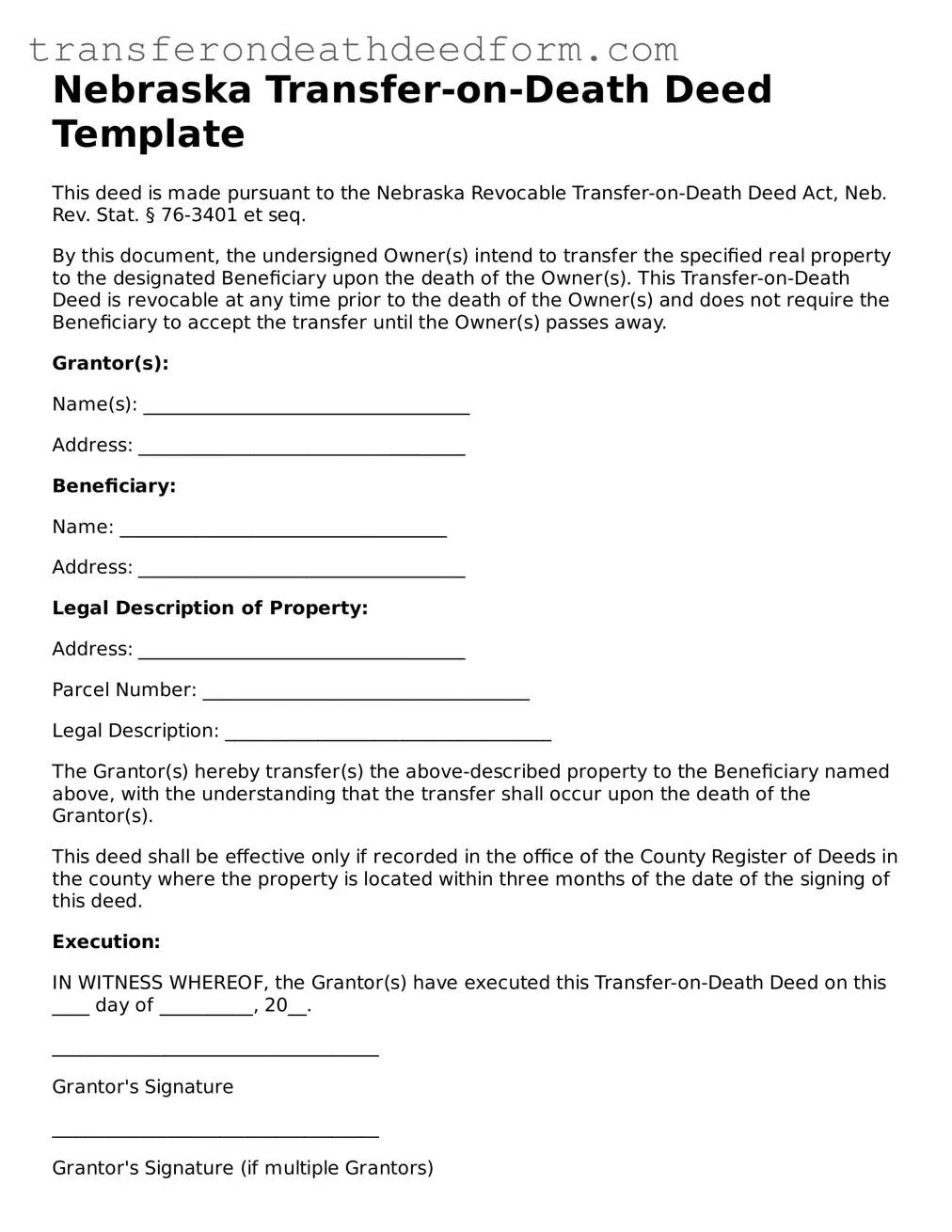Nebraska Transfer-on-Death Deed Template
This deed is made pursuant to the Nebraska Revocable Transfer-on-Death Deed Act, Neb. Rev. Stat. § 76-3401 et seq.
By this document, the undersigned Owner(s) intend to transfer the specified real property to the designated Beneficiary upon the death of the Owner(s). This Transfer-on-Death Deed is revocable at any time prior to the death of the Owner(s) and does not require the Beneficiary to accept the transfer until the Owner(s) passes away.
Grantor(s):
Name(s): ___________________________________
Address: ___________________________________
Beneficiary:
Name: ___________________________________
Address: ___________________________________
Legal Description of Property:
Address: ___________________________________
Parcel Number: ___________________________________
Legal Description: ___________________________________
The Grantor(s) hereby transfer(s) the above-described property to the Beneficiary named above, with the understanding that the transfer shall occur upon the death of the Grantor(s).
This deed shall be effective only if recorded in the office of the County Register of Deeds in the county where the property is located within three months of the date of the signing of this deed.
Execution:
IN WITNESS WHEREOF, the Grantor(s) have executed this Transfer-on-Death Deed on this ____ day of __________, 20__.
___________________________________
Grantor's Signature
___________________________________
Grantor's Signature (if multiple Grantors)
___________________________________
Witness Signature
___________________________________
Witness Name
State of Nebraska
County of ________________
Subscribed and sworn to before me this ____ day of __________, 20__.
___________________________________
Notary Public
My Commission Expires: _______________
